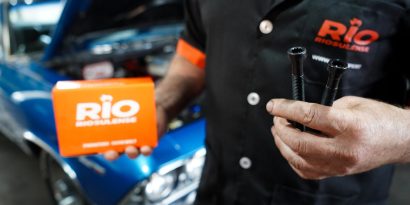At a mechanical workshop, precision is an important keyword for most repairs, especially when it comes to components that are essential for the engine functioning, such as bearing shells. These parts play a crucial role in friction decrease and uniform charge distribution, making sure the engine operates in an efficient and lasting way.
However, do you know how to correctly measure bearing shells before applying them? And why is this process so important? To help answering these questions, lets dive into these questions, offering valuable insights to optimize the maintenance routine and make sure a higher quality service is provided!
Understanding the importance of correctly measuring bearing shells
Experienced repairers know that bearing shells are essential for longevity and reliable performance of any engine. As we have seen, these parts act as an intermediate element between the crankshaft and the shell itself, absorbing the heat generated by friction and uniformly distributing the force generated.
This is why, when applying these parts, the Expert must precisely measure their dimensions and thickness, guaranteeing a perfect fit. Otherwise, the engine can have several issues, such as premature wearing of components, increased internal temperature and even catastrophic failures. Therefore, understanding the correct measure of bearing shells is fundamental for any professional of the area.
By the way, this is an especially critical care in engines submitted to high charges or extreme operating conditions, when the margin of error is virtually null. In addition, the correct installation and measurement of bearing shells also significantly contribute to fuel savings and decreased pollutant emission.
Do not forget that the origin of the bearings you will install also play an important role for the success of the repair. Using inadequate or low-quality parts might result in inaccurate adjustments, leading to constant failures and making your customers’ account with the workshop more expensive.
4 valuable tips to stand out when installing bearing shells
If you work only with the best and most modern automotive solutions at your workshop, the good news is that, with the advances in technology and the introduction of new materials and manufacturing techniques on the market, bearing shells have significantly evolved.
Now it is possible to find bearings manufactured with advanced metallic alloys, which are capable of offering even more resistance and durability. These developments not only improve the overall performance of the engine, but also facilitate the measuring and installation process for bearings, enabling more precise and reliable adjustments. This means that, with a good bearing in hand, it is possible to perform installation with excellence following 4 simple steps:
1 – Properly clean the installation area
Before starting the measurement and proceeding with the installation, make sure that both the bearings and shells are clean and ready for the maintenance routine. Keep in mind that the excess of residues may affect the precision of measurements, jeopardizing the whole service.
2 – Use adequate tools
For a precise measurement, it is essential to use high-quality pachymeters and micrometers. In addition, it is important to make sure these tools are calibrated and perfectly conserved, avoiding critical errors during measurement.
3 – Always check the radial clearance
To precisely measure the radial clearance, it is recommended to use a plastigage. Here, you just have to place a plastigage strip on the crankshaft before installing the bearing and the shell. When pressing the bearing, the plastigage is compressed, allowing the Expert to measure the width of compression and to find the existing radial clearance.
Remember that the whole process must be carefully performed, strictly following the specifications from the engine manufacturer, to make sure the clearance meets the specific lubrification needs of each vehicle.
4 – Check oversizes
When the crankshaft or shells show wearing, using oversized bearings might be a viable solution, since this makes it possible to recover compatibility and to restore the efficiency of the engine. Don’t forget that selecting oversized bearing shells requires a precise measurement of the internal diameter of bearings and of the external diameter of the crankshaft.
This is a crucial step in order to make sure the parts are compatible and able to accommodate wearing without compromising the integrity and performance of the engine.
Count on RIO to safely apply your bearings!
RIO’s bearing shells stand out on the market for their superior quality, being produced with entirely metallic solid alloys. In specific projects, they can be bimetallic or trimetallic, offering unprecedented adaptability at different operating conditions.
In addition, the oversizes available in our catalogue simplify the Expert’s service even in complex applications, allowing precise adjustments and providing a reliable and consistent performance. That is, choosing RIO’s bearing shells is a lasting and efficient solution, guaranteeing maximum engine performance.
Therefore, do not waste your time dealing with bearings of questionable quality: check out our catalogue, see our application options and renew your stock with the latest technology in automotive replacement!





